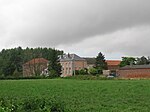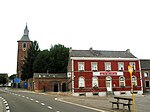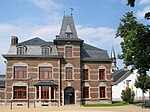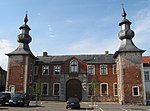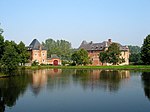Brogne Abbey

Brogne Abbey, also known as Saint-Gerard Abbey, was a Benedictine abbey founded in the early 10th century by Gerard of Brogne in the village of Brogne (now the Saint-Gérard subdivision of Mettet, Wallonia).Gerard founded the abbey on his own land, with the blessing of Stephen of Liège (died 920), and obtained a relic of St Eugenius from the abbot of Saint-Denis. A charter of 923 granted land in Hesbaye to the monastery. In 992 Otto III visited the abbey together with Notker of Liège and confirmed its independence and privileges. In 1183 Pope Lucius III confirmed the abbey in all its possessions.In 1566 the revenues of the abbacy were assigned to the recently founded Diocese of Namur by a bull of Pope Pius IV. Thereafter the monastery was governed by a prior on behalf of the bishop of Namur. In 1656 the monastery was incorporated into the Bursfelde Congregation. Just which revenues were due to the bishop remained subject to dispute, petitions and sometimes litigation until the abbey was suppressed in 1796.The buildings of the former monastery were acquired by the municipality of Mettet in 1974, and were listed as built heritage in 1995. Since 2013 they have housed a microbrewery, and since 2015 a centre for viticulture.
Excerpt from the Wikipedia article Brogne Abbey (License: CC BY-SA 3.0, Authors, Images).Brogne Abbey
Rue de l'Abbaye, Éghezée
Geographical coordinates (GPS) Address Nearby Places Show on map
Geographical coordinates (GPS)
| Latitude | Longitude |
|---|---|
| N 50.6205 ° | E 4.9549 ° |
Address
Ancienne abbaye de Boneffe
Rue de l'Abbaye
5310 Éghezée
Namur, Belgium
Open on Google Maps
